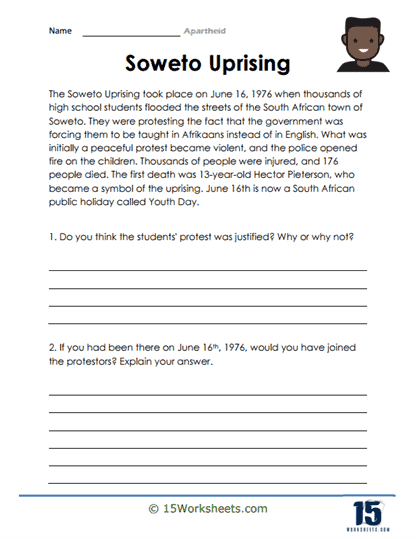Soweto Uprising

Worksheet Description
The Soweto Uprising took place on June 16, 1976 when thousands of high school students flooded the streets of the South African town of Soweto. They were protesting the fact that the government was forcing them to be taught in Afrikaans instead of in English. What was initially a peaceful protest became violent, and the police opened fire on the children. Thousands of people were injured, and 176 people died. The first death was 13-year-old Hector Pieterson, who became a symbol of the uprising. June 16th is now a South African public holiday called Youth Day.
Do you think the students’ protest was justified? Why or why not?
The worksheet looks into the historical event that occurred on June 16, 1976, in the South African town of Soweto. It describes how high school students protested against the government’s decision to teach in Afrikaans instead of English, leading to violent confrontations with the police. The narrative also highlights the tragic death of 13-year-old Hector Pieterson, who has since become an emblematic figure of the uprising, and mentions that June 16th is now commemorated as Youth Day in South Africa.
his worksheet aims to deepen students’ understanding of a pivotal moment in South African history, the Soweto Uprising. It encourages them to engage empathetically with the past, challenging them to evaluate the moral and ethical dimensions of historical events. By asking students to consider their potential actions in a similar situation, the worksheet fosters personal reflection and promotes a deeper connection to the content. It underscores the significance of historical events in shaping collective memory and national identity.
